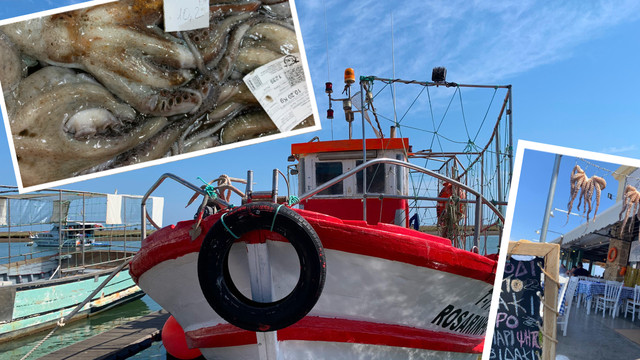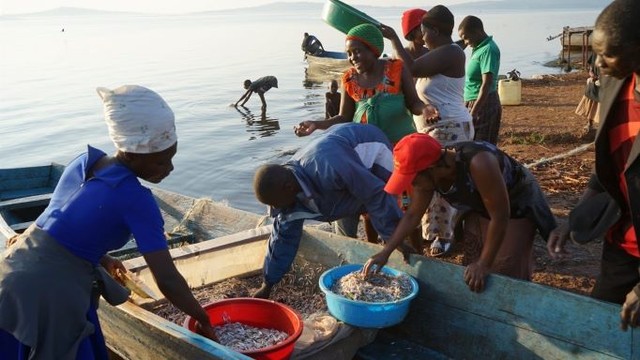Author interview: 'Small-scale fisheries in Europe: status, resilience and governance'
'Small-scale fisheries in Europe: status, resilience and governance' explores the small-scale fishing industry in Europe, a sector often overlooked in policy discussions. Co-editor Cristina Pita discusses the book’s content, key findings and who should read it.
 Q: What’s the book about?
Q: What’s the book about?
CP: We wanted to compare and contrast small-scale fishers in Europe. Despite forming the majority of Europe’s fishing fleet, small-scale fishers are often ignored by policymakers. And although organisations such as the Brussels-based Low-Impact Fishers of Europe (LIFE) have increased their visibility in the last decade or so, they are still way behind larger-scale industrial fisheries.
There is also little research focused on small-scale fisheries; and the information that does exist tends to consider the environmental and biological, rather than human, aspects of their work.
So, we wanted to shed some light on that side of things, looking at governance, resilience and the sector’s socioeconomic importance. We also wanted to determine each country’s definition of small-scale fishers and understand how they manage the sector and the kind of challenges they face.
Q: When you talk about ‘human’ aspects you mean in terms of how much local coastal economies depend on small-scale fishing for their livelihoods?
CP: Yes, that’s right. So we could compare responses across countries, we used a clear set of guidelines, asking questions about the socioeconomic importance of small-scale fisheries, the participation of women, how fishers are governed, policies, who the main players are, how people fish, what they fish, the challenges they face and competition with other activities.
Q: Why is small-scale fishing so important for coastal economies?
CB: Ninety per cent of the people who work in fisheries around the world are small-scale fishers. And if you consider all the other activities around them – such as setting the gear, cleaning and selling fish, among others – around 7% of the world population indirectly depends on small-scale fisheries.
There’s a tendency to see them as a global South problem. But that’s not true. Neglected and overlooked everywhere, small-scale fishers are extremely important in the global North and South. Small-scale fisheries employ around 54% of all fishers in Europe; their boats make up 83% of the European fleet and more than 90% of some national fleets.
And, of course, we’re only talking about the fishers who go out to sea here. When we also consider the women employed in fisheries, as well as the culture, traditions, welfare and food security aspects, it’s clear that small-scale fishing is important in Europe.
Q: The book looks at small-scale fishing in 25 coastal countries. Why did you chose those particular countries?
CP: We originally wanted to focus on the European Union (EU), but then we included Turkey and part of Russia because we wanted to look at all coastal European countries.
I already knew about small-scale fishers in the UK, Ireland, France, Italy, Greece and Spain — countries with whom I had worked before — and Portugal, where I’m from. There are also some publications on those countries. But finding out about small-scale fisheries in, say, Slovenia or Belgium, was more difficult.
I’m part of a network called Too Big to Ignore (TBTI) and through it I (and my co-authors) knew some social scientists and biologists working in small-scale fisheries in Europe. So, we contacted them to try to understand a bit more.
Q: How do you define small-scale fisheries?
CP: The EU has a very clear definition of small-scale fisheries – they use boats that are shorter than 12 metres and no towed gear, that is trawlers, dredgers or anything that tows on the bottom – and so, on the surface, EU countries appear to have a uniform approach.
But it’s more complicated than that. Countries use the EU definition when applying for financial assistance or for statistical purposes, not on an everyday basis.
So, when you work with small-scale fisheries, you need to define what you mean by the term. We wanted to understand the different national definitions, and they are quite different.
Take the UK, where the inshore fleet is made up of vessels under ten metres, including trawlers. In Portugal, there are some small vessels (below nine metres long) that dredge for shellfish at certain times of the year but uses static gear at other times. Following the EU definition, they are sometimes small-scale and sometimes not, but in Portugal they are considered small-scale, artisanal fisheries.
In Greece and Malta for instance, small-scale fishers have to own and be on board their vessel. This is not the case in most other countries. In Sweden, and nowhere else, small-scale fisheries need to be in a rural area and combined with another activity.
Countries define small-scale fishers by several factors – where they operate, the distance they sail from the harbour, returning to the same harbour, duration of the trip, the type of gear they use, vessel size and so on. Small-scale fisheries in different countries vary from having two or three defining characteristics to having as many as ten.

Europe’s small-scale fishing sector is often overlooked in policy discussions despite its huge importance (Photo: sarah faulwetter, via Flickr, CC BY-NC-SA 2.0)
Q: Could you talk about the book’s main findings, the key takeaways?
CP: We identify some common challenges faced by small-scale fisheries in different countries, including difficulties in market access, a lack of profitability and economic viability, and competition for space.
For example, in parts of Spain that have a lot of large mussel structures in the water, fishers compete with aquaculture. Around the Mediterranean, they compete with tourism or conservation projects.
There are also problems with poor governance and uncertainty due to policy and management, usually because small-scale fishers are poorly represented at management or decision-making levels.
Q: Has there been more recognition of the importance of small-scale fishing in the policy environment, and if so, how has that played out in policy dialogues and spaces?
CP: Small-scale fishers are increasingly becoming the focus of global policies. First, the Sustainable Development Goals (SDGs) called for access to resources and markets for small-scale fisheries (SDG14b). Then the Food and Agriculture Organization endorsed the Voluntary Guidelines for Securing Small-scale Fisheries which a lot of countries use to map their small-scale fishery management.
More recently, the UN declared 2022 the International Year of Artisanal Fisheries and Agriculture and 2021–30 the Decade of Ocean Science for Sustainable Development. All this brings a spotlight onto the sea, small-scale fisheries and the people who work in them. Following the direction of the UN and the SDGs, our book focuses on people.
Q: Who should read the book? Is it aimed at students, researchers, practitioners?
CP: It’s not aimed at one group in particular. It’s a descriptive book for anyone who’s interested in learning a bit more about the human side of small-scale fisheries in Europe – from EU practitioners and researchers to management bodies and students.
Interview conducted by Teresa Corcoran (teresa.corcoran@iied.org), communications content manager, IIED's Communications Group.
Small-scale fisheries in Europe: status, resilience and governance edited by José J. Pascual-Fernández, Cristina Pita and Maarten Bavinck (2020) available to purchase from Springer, 610 pages, paperback (ISBN 978-3-030-37373-3), hardback (ISBN 978-3-030-37370-2).



